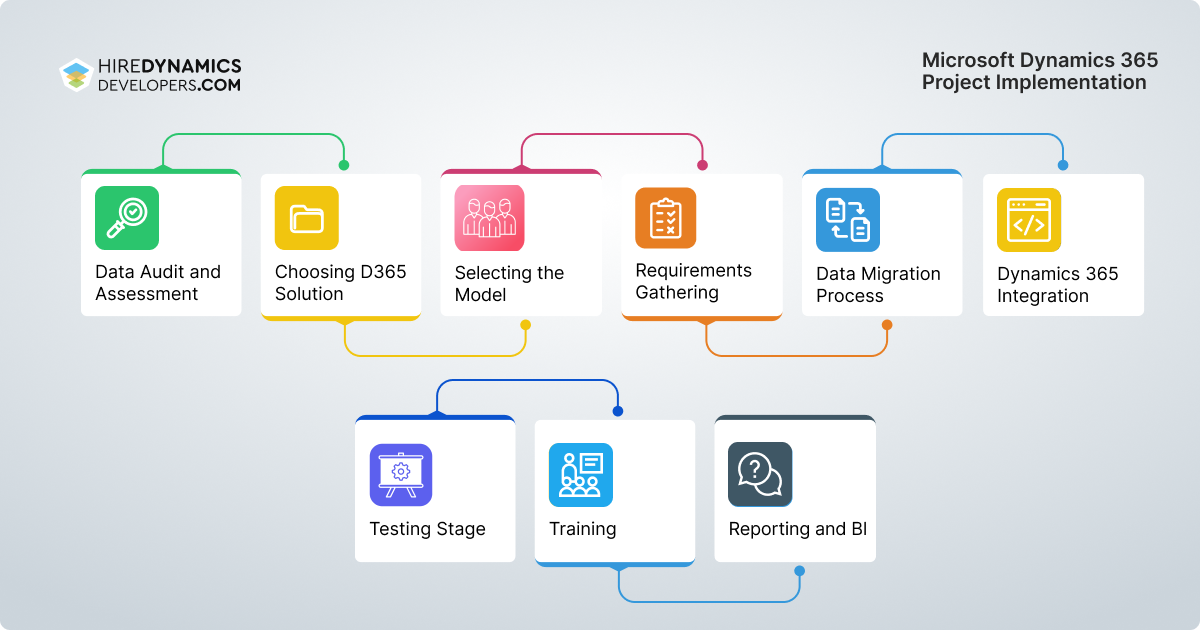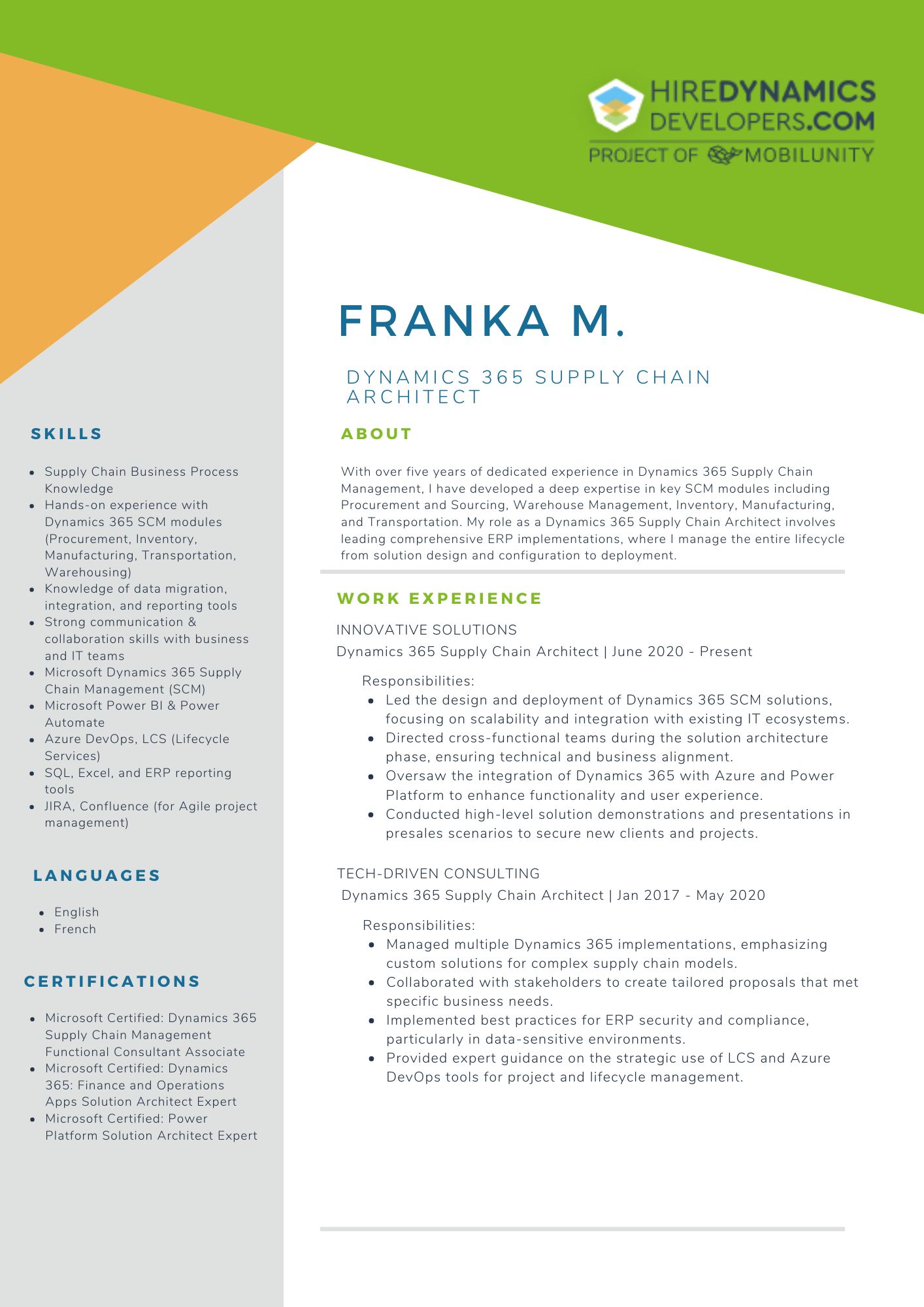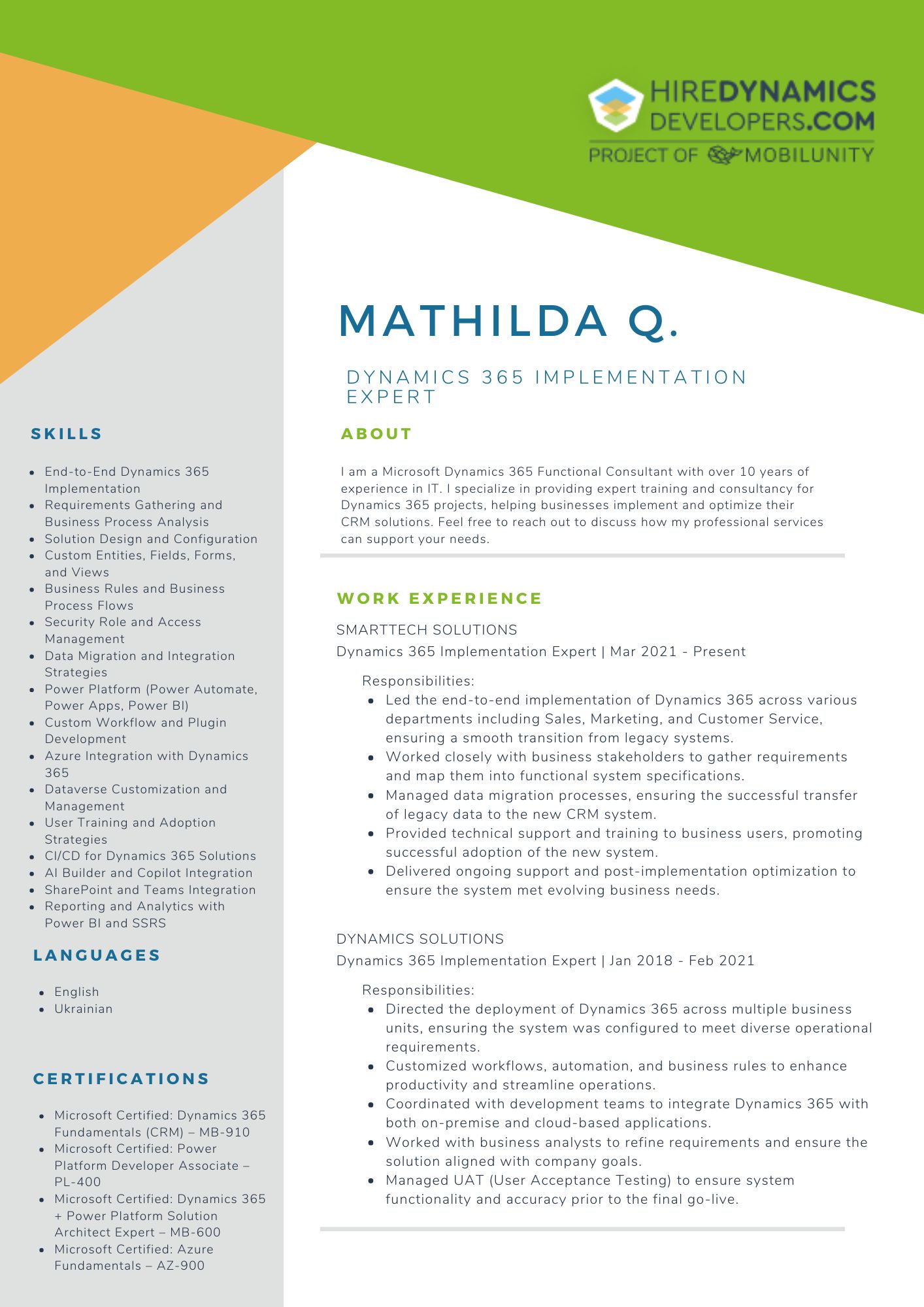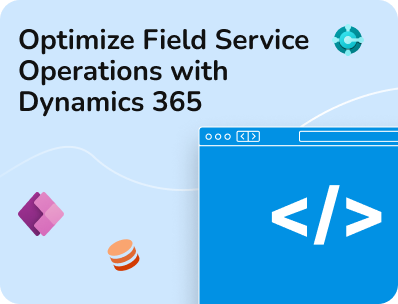- Our Models
- ServicesHesitant in service?
Get in touch with us with your business problem and we’ll consult you on the suitable service solution.
- SolutionsApplicationsLegacy SupportOther Microsoft SolutionsPower Platform ConsultantsAzure ConsultantsAzure Developers
- Industries
- Our Company
 About Us
About UsLearn more about our HireDynamicsDevelopers portal and the team behind it.
Case StudiesRead successful stories from our clients across various industries.
ServicesFind the right service according to your specific business needs.

- Resources
- Our Models
- ServicesHesitant in service?
Get in touch with us with your business problem and we’ll consult you on the suitable service solution.
- SolutionsApplicationsLegacy SupportOther Microsoft SolutionsPower Platform ConsultantsAzure ConsultantsAzure Developers
- Industries
- Our Company
 About Us
About UsLearn more about our HireDynamicsDevelopers portal and the team behind it.
Case StudiesRead successful stories from our clients across various industries.
ServicesFind the right service according to your specific business needs.

- Resources
Microsoft Dynamics 365 Project Implementation Roadmap
Updated: December 18th, 2024 by Ivan Farafonov
The most important aspect of success for every company is achieving efficiency through better management of enterprise resources. Microsoft Dynamics 365 platform provides a range of CRM and ERP solutions. They provide a strong background for organizations striving to improve their operational processes and business logic. Implementing D365 products can transform sales, finance, operations, and customer relationships.
Different organizations have unique needs, so choosing which solution implementation is critical. From small private businesses to large production enterprises, the need for integrated systems that provide real-time insights and streamline processes is huge.
This article outlines a strict and understandable roadmap, guiding organizations through each step of the process, from initial assessment to the conduction of full operation. The Microsoft Dynamics 365 implementation project plan might serve as a detailed guide to ensure the successful deployment and integration of your projects.
General Understanding of Implementation Phases
The phases of deployment in a Dynamics 365 project typically include:
- Planning: Establishing a clear vision and project scope.
- Execution: Carrying out the actual implementation tasks, including system configuration and data migration.
- Monitoring: Assessing progress and making adjustments as necessary.
- Closure: Finalize the project and transition to support.
Each of these phases ensures the deployment meets your needs and allows you to achieve the company’s strategic goals.
As more organizations use the powerful platform, the potential for operational excellence becomes increasingly attainable. Following the Dynamics 365 implementation project plan template can further optimize the process. With the right planning, execution, and support of a reliable MS Dynamics implementation expert, businesses can unlock the full potential of Microsoft, transforming their operations and promoting growth.

Dynamics 365 Project Implementation Methodology
Implementing Dynamics 365 products involves a structured methodology and procedures to ensure every aspect and process of the business is considered. It requires several steps, including customization of tools, integration with other software, and setting up a workflow in the new system. It is necessary to ensure convenient and efficient use of all the capabilities of the powerful D365. As a result, this approach to Dynamics 365 implementation allows you to improve your internal interactions and upgrade your dealing with customers.
Here, we will explore each phase of the deployment in detail.
Hire our expert to implement Microsoft Dynamics 365 smoothly!
Internal Audit
Work on Microsoft Dynamics 365 implementation begins with the involvement of a highly qualified specialist (consultant or business analyst) to study the existing settings in your company. Their main task is to collect all the details for further entry into the new system. It includes financial transactions and reports, customers and leads, employees, and many other aspects you face daily.
An internal audit is like a foundation. In addition, this stage involves engaging employees and workers of the company to assess existing business processes and identify pain points. The main activities in this phase include:
- Engaging Employees: Involve key stakeholders from various departments to gather thoughts on current operations and challenges.
- Business Process Mapping: Create descriptions and visual representations of existing processes in the company to identify gaps.
- Report and Conclusion: Make a detailed summary of the work done in the form of a report with all the necessary data.
Summary
Conducting an internal audit allows organizations to understand their operational landscape better and identify the critical needs that D365 can address. The audit lays the groundwork for the entire Dynamics 365 implementation project by ensuring that the right problems are tackled from the start.
Let’s see how it works in practice! In general, everything is quite simple. The analyst collects requirements and wishes from all departments and employees and compares them with existing processes. Next, the Microsoft Dynamics 365 consultants prepare a report, indicating which processes can remain unchanged, which operations need to be optimized, and which need to be created from scratch. As a result, you choose the relevant solution that meets your needs and objectives based on the information.
Choosing the Right Dynamics 365 Solution
After the audit, you will have a series of consultations to select the best solution among the Dynamics products. Of course, the expert will make recommendations based on the key points identified. The choice of software is influenced by the need to optimize/create custom tools, the number of employees and departments involved, the cost of deployment and using a particular solution, staff training, and subsequent maintenance.
Aspect | Business Central (BC) | Finance and Operations (F&O) | Dynamics 365 Sales |
|---|---|---|---|
Target Audience | Small to medium-sized businesses (SMBs) | Large enterprises | Organizations needed to improve sales processes and customer relationship management |
Company Size | Typically up to 500 employees | Generally over 500 employees | Suitable for businesses of all sizes |
Core Modules | Financial Management, Sales, Purchasing, Inventory, Project Management | Financial Management, Supply Chain Management, Manufacturing, Human Resources, Project Accounting | Lead and Opportunity Management, Account Management, Sales Forecasting, Reporting & Insights |
Customization | Limited customization; relies on extensions and third-party apps | Highly customizable to meet complex and specific business processes | Highly customizable with Power Apps, Power Automate, and integration with other Microsoft tools |
Licensing Costs | Subscription-based licensing starts at $70 per user per month | Subscription-based licensing starts at $210 per user per month | Licensing starts at $65 per user per month (Sales Professional) and $95 per user per month (Sales Enterprise) |
Implementation Time | Shorter period; typically a few months | A longer period; can span several months to over a year | Typically shorter than ERP solutions; many implementations take weeks to a few months |
User Count | No minimum user requirement | Minimum user requirement of 20 | No minimum user requirement |
Summary
To summarize, this step should result in the selection of a specific system that best meets your business needs, covers your team’s requests, and is affordable and time-efficient to implement. Choosing the right system ensures that the organization spendings in a solution that aligns with its strategic objectives and requirements. It’s important to gather the current needs and future scalability and improvements to accommodate growth and calculate ranges of developments.
Selecting the Engagement Model
The next stage in the Dynamics 365 implementation project plan is to select a model. Determining engagement strategy is crucial for the implementation’s success as it defines the path of development of the system.
Your choice depends on the presence or absence of current development processes in the company. If the company already has a development department or specialist, you should assess their functional responsibilities and capabilities. You need to understand whether there is a technical manager who will monitor deadlines, distribute tasks, monitor deployment, point out errors, and provide assistance. It also applies to other experts, such as QA or a Dynamics Support Specialist.
If the company already has the resources to cover some of these issues, you can choose to expand the in-house team to close the gaps. If there are no such processes at all, then it makes sense to choose a dedicated team model.
Models available:
Model | The essence of the model | Advantages of the model | Disadvantages of the model |
|---|---|---|---|
Dedicated team | A group of skilled professionals employed by a vendor but assigned exclusively to your project, functioning as an integrated extension of your internal team. | Full control over processes Expertise focused on your project Long-term collaboration possible | Higher costs compared to freelance Requires management from your side |
In-house Hiring | Employees hired directly within your organization. | High loyalty and commitment Complete integration with company culture Easier communication | Significant hiring and onboarding costs Limited scalability Resource management complexity |
Freelance | Independent contractors hired. | Cost-effective High flexibility Access to a global talent pool | Limited availability Potential communication challenges Lower accountability |
Summary
After weighing your team state and evaluating the features of each model, you should settle on the option that works for you. Selecting the appropriate approach and model depends on budget, timelines, and internal capabilities. By evaluating the organization’s current talent pool and budget constraints, leaders of the teams can make the best decision that supports the project.
Our Expert’s Opinion
Something about the fact that a dedicated team - best choice to effectively implement a project, since a well-coordinated system for implementing projects of varying degrees of complexity has already been developed. The experience of interaction and understanding in a team is very important for reducing project implementation time.
Roman U. – Microsoft D365 Technical Solution Architect
Some of Our Dynamics 365 Experts











Requirements Gathering
During this phase, consultants collect and document detailed requirements from various departments and create design documents. Key focus areas include identifying the information exchange between departments, determining which data needs to be uploaded and where, and specifying existing workflows that require customization in the new system. Additionally, essential entities are added and configured to fit organizational needs.
Then, all requirements are transformed into actionable tasks for consultants and developers, forming the foundation. Third-party software is carefully selected (e.g., ERP connectors, analytical tools), while integration with Microsoft products like Power BI, Power Automate, and Azure ensures operational efficiency.
Key methodologies for gathering requirements include:
- Interviews: Conduct one-on-one discussions with stakeholders to understand their needs.
- Workshops: Schedule group sessions to brainstorm and identify requirements collaboratively.
- Surveys: Use questionnaires to gather feedback from employees from different departments.
- Observation: The best way of understanding internal company processes is observing the work of each department.
The step is critical in the Dynamics 365 implementation roadmap, as it shapes the configuration and customization of the system. Gathering diverse perspectives ensures that the final deployment meets the needs of all users.
Summary
An effective requirements-gathering process ensures that all stakeholder needs are captured. It leads to a system that truly supports business goals. By providing open communication during the phase, organizations can spread a sense of ownership among users, which can significantly enhance user adoption later on.
Dynamics 365 Implementation Planning
Following requirement gathering, consultants develop a comprehensive Dynamics 365 implementation project plan. At this stage, all the requirements collected earlier are assembled into a roadmap with specific deadlines and specialists responsible. This is the stage of planning the specific tasks. It includes:
Mapping Out Customizations
This step involves analyzing the gathered requirements to identify specific areas where standard Dynamics 365 functionalities need to be enhanced or adapted. By pinpointing necessary customizations, such as tailored workflows, new entities, or unique integrations, the system is aligned with the organization’s unique operational needs.
Creating a Detailed Timeline
A well-defined timeline is established to outline key milestones, deadlines, and dependencies throughout the implementation process. This ensures a structured approach, enabling teams to monitor progress, allocate resources effectively, and address potential delays proactively.
Summary
Finally, this step allows you to set clear tasks and deadlines. This way, each specialist will be in the right place, and each stage will be clearly planned. A strong and strict strategy in system customization will provide only necessary customizations and integrations ensuring cost and time reduction.
Data Migration Process
Data migration is a critical step in the Dynamics 365 implementation process, requiring careful planning and execution.
Key activities include:
- Data Audit: Assessing existing data for accuracy and relevance.
- Data Cleaning: Ensuring that all data is valid, complete, and formatted correctly for the new system.
- Data Transfer: Migrating data through APIs, Excel files, or other methods depending on the chosen solution.
Data integrity is paramount in the phase, as the success of the deployment relies heavily on the quality of data within the system. Effective data migration is vital for maintaining operational continuity and ensuring that users have access to accurate information.
Summary
As a result, you transfer data from the legacy system to the new software. Dynamics 365 data migration ensures a smooth transition and allows you to start working without interruptions to enter information manually. It is extremely important to make this operation safe and secure to avoid loss of materials.
Dynamics 365 Solution Integration
Integrating D365 with existing systems improves functionality and data flow across the organization. The phase may involve:
Integration | Meaning |
|---|---|
API Integrations | Connecting Dynamics 365 with other software applications for seamless data exchange. |
Custom Integrations | Developing bespoke solutions to meet specific organizational needs. |
Microsoft Teams | Embedding Dynamics 365 data into communication platforms for collaborative decision-making. |
Outlook Integration | Enhancing email and scheduling workflows directly within Dynamics 365. |
SharePoint | Streamlining document management by linking records to centralized storage systems. |
LinkedIn Sales Navigator | Enabling advanced lead insights and relationship-building tools. |
Microsoft Dataverse | Facilitating data integration and management across various applications within Microsoft. |
E-commerce Platforms | Integrating platforms like Magento or Shopify. |
Summary:
In fact, both third-party systems and Microsoft products can be integrated into Dynamics. As a result, you can combine all the tools you need for your business and create one common environment where all the information is gathered. Integration ensures that all systems work harmoniously, providing a comprehensive view of operations. This step is essential for organizations looking to leverage their existing technology investments while enhancing capabilities through D365. One tip: if you need a high-quality and smooth connection, hire a Dynamics 365 integration specialist as your assistant.
Testing Stage
Testing is a critical phase in the implementation of Dynamics 365, ensuring the system functions as intended and meets all predefined requirements, particularly for customizations and integrations. This process involves the validation of core functionalities, workflows, and data accuracy across modules. Comprehensive testing verifies that custom features, new entities, and integrations operate seamlessly within the ecosystem. Effective testing minimizes risks, uncovers potential issues early, and ensures a smooth transition to production. This phase includes:
- Unit Testing: It involves validating individual components of Dynamics 365, such as custom workflows, scripts, or plug-ins, to ensure they function correctly in isolation.
- System Testing: Evaluating the complete system for integration and performance. This phase ensures data exchange between modules and external integrations operates smoothly under realistic conditions.
- User Acceptance Testing (UAT): UAT engages end-users to assess whether the system meets their practical needs and expectations in real-world scenarios. Their feedback is crucial in identifying usability issues and ensuring the system aligns with business objectives before final deployment.
Summary
Testing stages minimize the risk of issues post-launch and ensure a smooth transition to the new system. By engaging end-users in the testing process, organizations can uncover potential issues before the system goes live as they have an inner vision of a required product.
Training
One of the last Dynamics 365 implementation phases is the training of end users. This involves familiarization with system tools, training, and reliable support during the first weeks of interaction with the new environment. Training is essential for successful adoption of the new system. Effective training strategies include:
- Workshops: Hands-on training sessions for employees to familiarize them with the new system.
- Online Learning Modules: Providing resources for self-paced learning.
- Support: Establishing channels for continuous assistance and questions post-implementation.
Summary
Post-implementation training allow employees to use the new system effectively. Investing in training can significantly increase user confidence, leading to better utilization of Dynamics 365’s capabilities.
Reporting and Business Intelligence
One of the key advantages is its reporting and analytics capabilities. Organizations should focus on:
- Defining Key Performance Indicators (KPIs): Establishing metrics to measure success and performance.
- Creating Dashboards: Customizing dashboards for real-time insights into business operations.
Summary
A wide range of reporting tools enable informed decision-making and provide visibility into critical business areas. By effectively utilizing Dynamics 365’s business intelligence features, organizations can turn data into actionable insights, driving strategic initiatives.
Need help with full cycle of Dynamics 365 implementation?
Get in touch with us to hire reliable consultants!
Additional Considerations for a Successful Implementation
To further enhance the chances of a successful Microsoft Dynamics 365 implementation, organizations should consider the following:
- Engage Leadership: Involve top management in the implementation process to foster support and ensure alignment with business objectives.
- Change Management: Develop a newly recreated change management strategy to help employees adapt to the new system and processes.
- Post-Implementation Review: After going live, conduct a review to assess the implementation's effectiveness and identify areas for continuous improvement.
By taking these additional steps, organizations can create a solid foundation for their Dynamics 365 implementation, ensuring that the system delivers lasting value and drives operational excellence.
Our Successful Case Study
- USA
- Ecommerce
- Part-time engagement
- 1 Dynamics CRM Consultant
- Dynamics CRM
Meet our client, an eСommerce company from the United States, committed to preserving our planet’s resources through renewable energy and company-wide recycling programs. Today, the team is recognized as a leading manufacturer of zero-emission computers. They are constantly expanding their range of solutions and partnering with various companies to supply their products.
The client contacted us with a request to find a part-time specialist to help with the integration of the Salesforce call center module with the Dynamics ecosystem. We found a Dynamics CRM consultant who specializes in integration issues and is familiar with Salesforce. A reliable assistant on their side helped to set up all systems smoothly, quickly, and securely.
The client was completely satisfied with the work and later hired a Salesforce administrator with us.
Conclusion
Implementing Microsoft Dynamics 365 is an integrative way that requires careful planning and execution. From conducting an internal audit to ensuring robust training and support, each step is critical to the project’s success. By following this Dynamics 365 implementation guide, organizations can effectively gain the power of Dynamics 365, ultimately leading to enhanced productivity, improved data accuracy, and better overall business performance.
By recognizing the unique needs of the organization and employing best practices throughout the Dynamics 365 implementation steps, businesses can leverage Dynamics 365 to drive growth and achieve strategic objectives. The Microsoft Dynamics 365 implementation methodology provides a clear framework for navigating the life cycle, ensuring that organizations can benefit from both rapid implementation and end-to-end one. When you hire Dynamics 365 developers, you may cope with each stage easily and with excellent quality. Try it and enjoy your modern and fully customized system.
Cooperate with our specialists to implement Microsoft Dynamics 365 hassle-free!
Outline

Potapenko O.
20 HOURS / WEEK

Viacheslav O.
10 HOURS / WEEK

Mathilda Q.
10 HOURS / WEEK
Request Our Services
Create Your Own Effective Microsoft Dynamics 365 Project Implementation Plan!
Your Partner Recognized in Dynamics Community
















